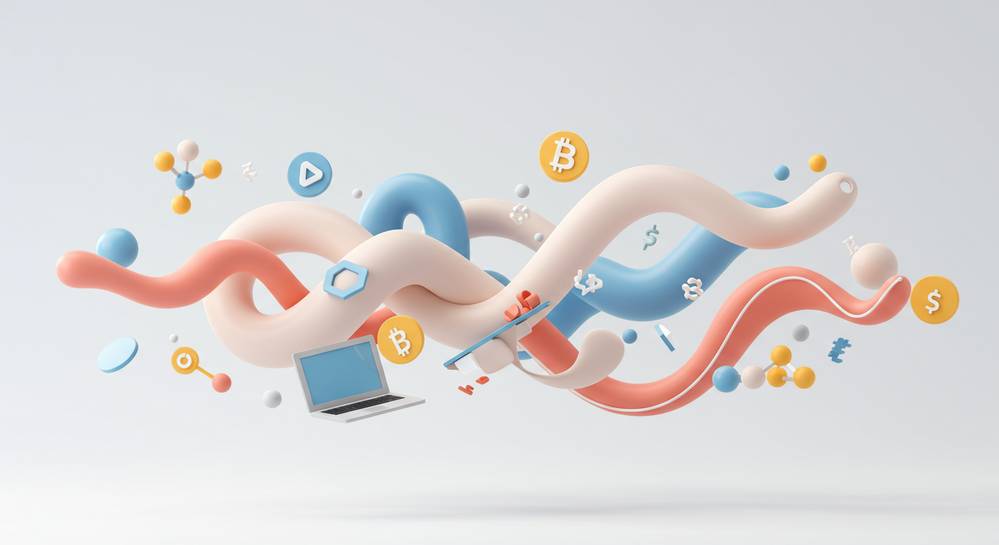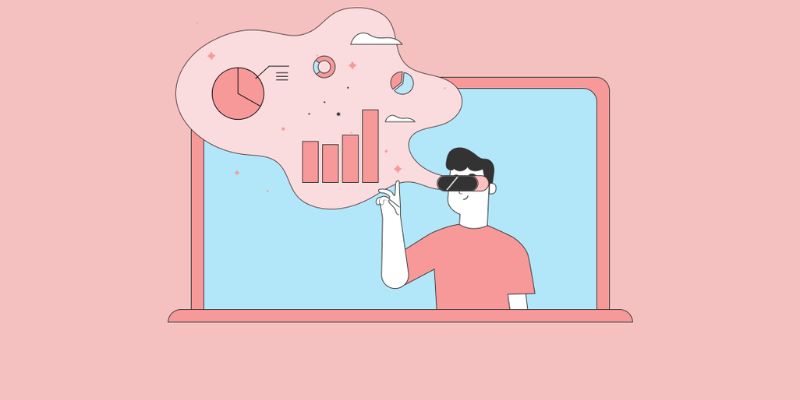The way we buy has flipped on its head. Stroll in any store today, and you’ll spot the sea-change. New tech and values have redrawn the shopper’s map. Here, we’ll dig into how changes in customer behavior and buying journeys have shaken the ground. It’s no old-school browsing game anymore. It’s faster, smarter, and woven into every bit of our day. Brace yourself; we’re about to tread the transformed terrain of today’s buyer. Stick with me, and by the end of this journey, you’ll navigate the new shopping landscape like a pro.
Understanding Evolving Consumer Habits and Modern Purchasing Patterns
The Digital Influence on Shopping: From Brick and Mortar to Online
Let’s dig into how we buy things today. Not long ago, we’d walk into a store, see what we liked, and buy it. Simple, right? Now, throw in smartphones, the internet, and the power to shop from your couch – shopping has changed for good. It’s like we’ve taken the brick from brick and mortar and built a digital shop. Our computer and phone screens are the new windows we peer through, checking out the latest stuff.
Key Forces Driving Behavioral Shifts in Shopping
Now, let’s talk about what’s behind these changes. We’ve all seen it. You’re scrolling on your phone, and boom, you see a pair of shoes that catches your eye. Social media shows us what’s hot, but it also pushes us to shop differently. The urge to buy on impulse still hits us, only now, a few taps and we’ve ordered it.
Our shops are not just on streets now; they’re in our pockets. With online shopping trends growing, we’re choosing convenience more and more. We flick open an app, and that’s our store. We’re not just looking for stuff; we’re after an experience. Those websites that remember what we like and suggest items? That’s a personalized shopping experience making us feel like VIPs.
We’ve also started to think about our planet when we shop. Interest in sustainable consumerism isn’t just talk; people want to buy things that don’t hurt the earth. Brands get this, and they’re changing too. They know if they don’t keep up, they’ll lose us.
And let’s not forget how we now want to shop on our terms, be it on our phones, laptops, or even asking our smart speakers to order pizza. Yes, shopping via voice search is here, and it’s growing. The way we pay is changing as well, from cash to cards to phone taps – easy and quick.
If you’re wondering if stores will know us better, the answer is yes. The shops of tomorrow use artificial intelligence to figure out what we like. Imagine walking into a store and an augmented reality mirror showing you how a dress looks on you without trying it on. Virtual try-ons are real, and they’re awesome.
We’re also saying what we think about our shopping more than ever. Customer feedback counts big time today. We read reviews and write them. Good or bad, we let everyone know. This helps us trust where we buy from, and trust is gold in shopping.
Shops aren’t just reacting to us; they’re changing ahead of time. This keeps us coming back. Brand loyalty is seeing a big shake-up. If a brand makes our experience fun and easy, we stick with them. It’s that simple.
In all this, businesses are watching and learning from us. They’re using what they learn to change the shopping game. They’re always adapting to new buying behaviors, adjusting to keep us happy and to keep us coming back. It’s a two-way street, and believe me, it’s busy. We’re in exciting times where our buying journey is shaped by every swipe, tap, and click. Let’s keep the conversation going and see where we head next!
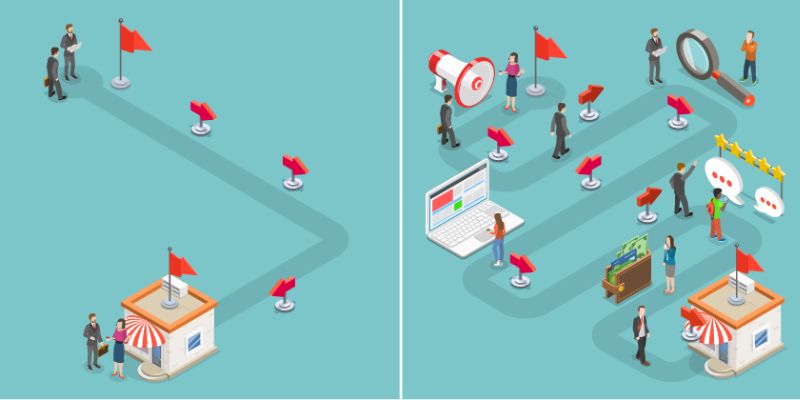
Examining the Transformation of the Buying Journey
Omnichannel Retailing: Creating Seamless Customer Experiences
Omnichannel retailing is changing the game. It’s breaking down old walls. It makes shopping easy, no matter where you are. Let’s dive into that, shall we?
You walk into a store. You check just what you want on your phone. You even ask the store’s app if your size is there. If not, they ship it to you. This magic? It’s omnichannel retailing at work – stores, websites, and apps all in sync. And guess what, it matters more than ever. Customers expect it. They want shopping to be smooth, like their favorite song.
Now, picture this. You’re in a store looking at a shirt. But wait. You’re not sure if it’s right for you. With one tap, your phone shows how it looks with pants you bought last week. It’s all connected, online to offline. This is what today’s buyers look for. They crave experiences that are personal, where they feel understood. Omnichannel retailing makes that happen. It brings together what you see online with what’s in stores. It’s not just about buying. It’s about feeling good while doing it.
The Influence of Social Media and Mobile Commerce on Consumer Decision-Making
Our phones are our new shopping pals. Social media, they rule. They nudge us to buy more than we think. When you scroll through your feed, it’s like walking through a digital mall. Ads, friends’ photos, and influencers – they all show you stuff to buy. And they’re good at it.
Here’s the truth: what we see on social media sways what we buy. Those cool shoes your favorite celeb wore? You liked them, right? Then, boom, you’re on a site, card in hand. That’s the power of social media and mobile commerce combined.
But it’s not just about the cool factor. It’s about trust. People trust their networks. So if a friend loves a product, you might too. This trust pushes brands to find real fans, not just famous faces. The goal? To get you to see their stuff as top-notch. Because when you trust what you see, you tap “buy” faster.
Social media also tells brands lots. Like what you heart, share, or zoom into. This goldmine of info helps them show you things you’ll like. It makes you feel like they know you. And it’s not a one-time thing. It keeps happing, with every like, every share.
In this new landscape, your voice is louder than before. It’s not just about ads telling you what’s cool. It’s a two-way chat. You tell brands what you like. They listen and fine-tune. It’s a chat that makes you come back for more.
So, here’s the rundown. Shopping now is a wild mix. Stores, screens, and socials all play a part. It’s always changing, always moving. And for those of you in charge of selling things? It’s time to lace up your boots. The buying journey now is a totally different hike. And folks? It’s one exciting trail to explore.
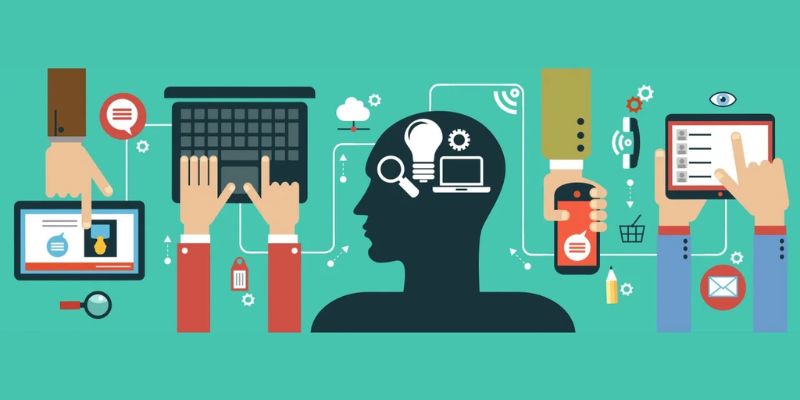
Personalization and Technology’s Role in Shaping New Shopping Realities
Integration of AI and Augmented Reality in Retail Experiences
Today, stores are not just stores; they’re smart tech hubs. AI and AR are stars here. They make buying cool and personal. Imagine trying on glasses without touching them. That’s AR magic for you! It lets you see how things look on you through a screen.
AI is like a smart friend who knows what you like. It suggests stuff you might want to buy. It can chat with you or help you find things in a store. It’s everywhere now, from online sites to malls. It’s smart and makes shopping easy and fun.
How Personalized Shopping Experiences Foster Brand Loyalty and Customer Retention
When a store gets you, you stick with it, right? Personal touch wins hearts. It’s like having a buddy in the store who knows your style. They remember your size, taste, and even your birthday! They send deals and ideas just for you.
This buddy is not a person, though. It’s smart tech that keeps track of your likes. It uses your old buys and clicks to figure out what you may want next. Personal tips make us feel special. This makes us come back for more.
Stores that get personal build trust. They make us happy and keep us coming. We buy more and tell pals about it. This is how they keep us for a long time.
In short, tech and personal care shape how we shop now. They make us like, trust, and stay with brands. The new shopping game is all about feeling understood. It’s about easy, fun, and smart buys that fit just you. And that’s a win for both us and the stores.
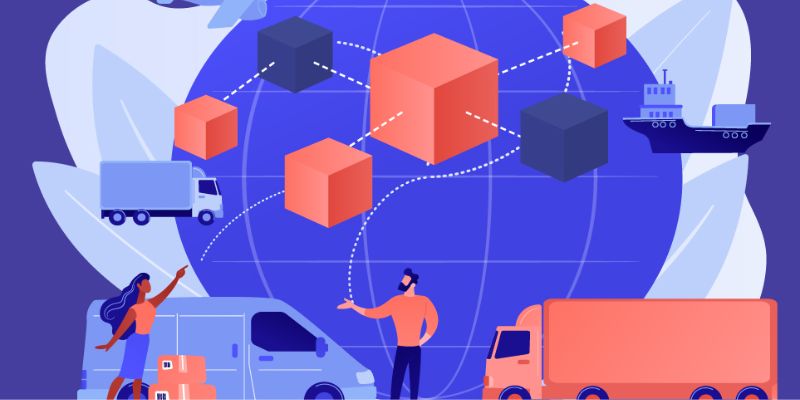
Adapting to New Consumer Expectations and Buying Behaviors
Sustainable Consumerism: Aligning Values with Purchase Habits
Folks today care a lot about our planet. They want to buy things that don’t harm our Earth. Many people now look for goods that last longer and help the environment. They check products and brands to see if they really do what they say about being green. Companies are catching on. They’re adding more info about how they make and pack products. Customers feel good buying things that match their care for nature. And they stick with brands that prove they care, too.
Shops and brands that don’t think green might lose buyers. Because people prefer to shop with their values in mind. A study said nearly 60% of customers would change their shopping habits to lower their impact on nature. Also, younger folks, like millennials and Gen Z, will spend more money on green products. They want to make a difference with their dollar.
From Impulse Buys to Subscription Models: Understanding Emerging Consumption Patterns
Next, let’s chat about how we buy things now. Before, many of us would see something and buy it right away. That’s an impulse buy. But now, we see another cool way to shop – with subscriptions. Think about things like meal kits or monthly sock boxes. People are loving this. Why? It’s easy and fun. And folks often feel like they get a treat every month.
With a subscription, companies can guess how much they’ll sell. This helps them plan better and save money. And we, as customers, don’t have to think about buying that item again and again. It just comes to us. We’re also seeing more options popping up everywhere. From food to clothes to pet toys – there’s a subscription for pretty much everything.
Another neat thing is how these subscriptions get to know us. They collect info on what we like. Then they send us stuff that fits our taste. This feels special, like getting a gift made just for us.
All these changes mean stores and brands have to keep up. They need to know how we think and what we want. And they should make buying smooth, no matter if we’re on a phone, computer, or in a store. It’s called omnichannel retailing. Those who get it right will win our hearts and our cash. Those who don’t will have to try harder.
In the end, us shoppers hold a lot of power. We’re changing the way things are sold. And the smart companies out there will watch and learn. They’ll adapt to keep us happy and coming back for more. After all, it’s not just about buying stuff. It’s about feeling good when we do. And as time rolls on, we’ll keep finding new ways to shop that fit with our busy lives and our values.
So, for those out there running stores or making products – listen up. We care about the planet. We like things made easy for us. And we enjoy feeling special. Keep these in mind, and you’ll see us stick around. Keep it simple, keep it green, and keep it fun. That’s how you’ll keep us clicking ‘buy’.
We’ve explored how shopping has changed big time, from stores we walk into, to clicks online. We saw that key forces are making folks shop different now. It’s not just about what we buy, but how we buy it too. Stores are blending with online tools to make our shopping smooth. And yup, what we see on our phones and social media really sways what we end up buying.
Then we dove into how cool tech stuff like AI and apps that let us try things on without being there are making shopping more about us. This helps stores keep us coming back for more. We also talked about how folks are getting real picky, wanting stuff that’s good for the planet and that match what they care about.
Nowadays, it’s not just grabbing what catches our eye, but also getting regular deliveries of what we love. As you think about all this, remember that keeping up with these twists and turns can make shopping a win for both you and the stores you like. Get ready to ride the wave of new ways to shop!
Q&A :
How have customer behavior and buying journeys evolved recently?
The digital age has revolutionized how customers interact with brands and make purchasing decisions. With the influx of online information and social media influence, buyers are more informed and empowered than ever before. They often research products extensively online before stepping into a physical store or choosing to purchase online. Convenience, peer reviews, and personalized shopping experiences have also become significant factors influencing consumer behavior and buying journeys.
What impact does technology have on changing customer buying journeys?
Technology has had a profound impact on customer buying journeys by introducing new channels and platforms for interaction and purchase. The rise of e-commerce, mobile shopping apps, social media commerce, and AI-driven personalized recommendations have streamlined the buying process, giving customers the ability to shop from anywhere at any time. Additionally, advancements in data analytics have enabled businesses to better understand customer preferences and optimize their sales strategies accordingly.
In what ways can businesses adapt to the changes in customer behavior?
Businesses can adapt to changes in customer behavior by embracing multichannel strategies, offering personalized shopping experiences, and prioritizing customer engagement. To remain competitive, companies should invest in understanding their customers through data analysis and employing tools like CRM systems. Developing a robust online presence, refining customer service, and fostering loyalty through rewards and personalized communications can also help businesses stay aligned with evolving customer expectations.
How can brands measure changes in consumer behavior and buying patterns?
Brands can measure changes in consumer behavior and buying patterns by leveraging analytics tools that track customer interactions across multiple touchpoints. These tools can include web analytics, customer relationship management (CRM) systems, and social media monitoring platforms. Surveys, customer feedback, and market research are additional methods to gauge consumer sentiment and identify trends. By integrating this data, brands can create a cohesive picture of customer behavior and effectively adjust their marketing strategies.
What are some key trends in customer behavior that businesses should be aware of?
Businesses should be aware of key trends such as the increasing demand for a seamless omnichannel experience, the rise of mobile commerce, and the importance of social proof through customer reviews and influencers. Sustainability and ethical business practices are also gaining traction among consumers. Additionally, with the advancements in AI and machine learning, there’s a growing expectation for personalized and predictive shopping experiences tailored to individual customer preferences.

